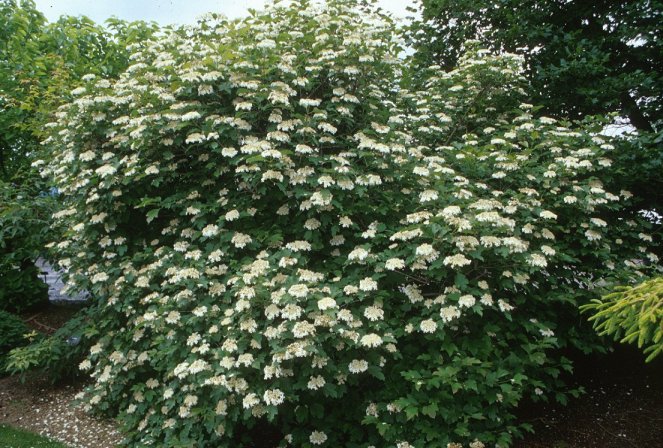| Botanical Name: Viburnum opulus 'Compactum' | |
| Common Name: Compact European Cranberrybush Vibu |

-
Anatomy
-
Culture
-
Design
Plant Type
Shrub
Height Range
3-6'
Flower Color
White
Flower Season
Spring
Leaf Color
Dark Green
Bark Color
Brown, Grey
Fruit Color
Red
Fruit Season
Winter, Fall, Persistent
Sun
Full, Half
Water
Medium
Growth Rate
Moderate
Soil Type
Sandy, Clay, Loam, Rocky, Unparticular
Soil Condition
Average, Rich, Poor, Well-drained, Moist, Dry
Soil pH
Acid, Neutral, Basic
Adverse Factors
n/a
Design Styles
English Cottage, Formal
Accenting Features
Fall Color, Showy Flowers
Seasonal Interest
Spring, Summer, Fall
Location Uses
Shrub Border, Foundation, Parking Lot, Raised Planter, Walls / Fences
Special Uses
Hedge, Mass Planting, Small Spaces
Attracts Wildlife
Birds, Butterflies
Information by: Stephanie Duer
Photographer: Don Syrek
Photographer: Don Syrek
-
Description
-
Notes
'Compactum' is a dwarf selection of the species, growing with a rounded, mounded, dense habit to about 5 feet tall and wide. It has good flowering and fruiting production, with white May to June flowers being held in flat clusters, and followed by berries that ripen to bright red throughout the summer and fall. Leaves are a dark green and lobed (usually three, though sometime five) and just slightly hairy. Fall color is reddish, though early freezes can lead to less dramatic results. Useful in the shrub or foundation border, sites with compacted or poor soils, and commercial and parking lot spaces. 'Nanum' is an even smaller selection, growing to about 2 feet tall and slightly wider.
Grow in well drained soil, preferably of a loamy nature, in full sun to partial shade. While adaptive to a variety of soil types, best growth occurs in fertile sandy-loam or clay-loam soils. Tolerant of alkaline soils. Occasional and selective pruning of oldest wood will keep the shrub compact, densely leafed, and tidy; shearing makes it very twiggy (see Guides).